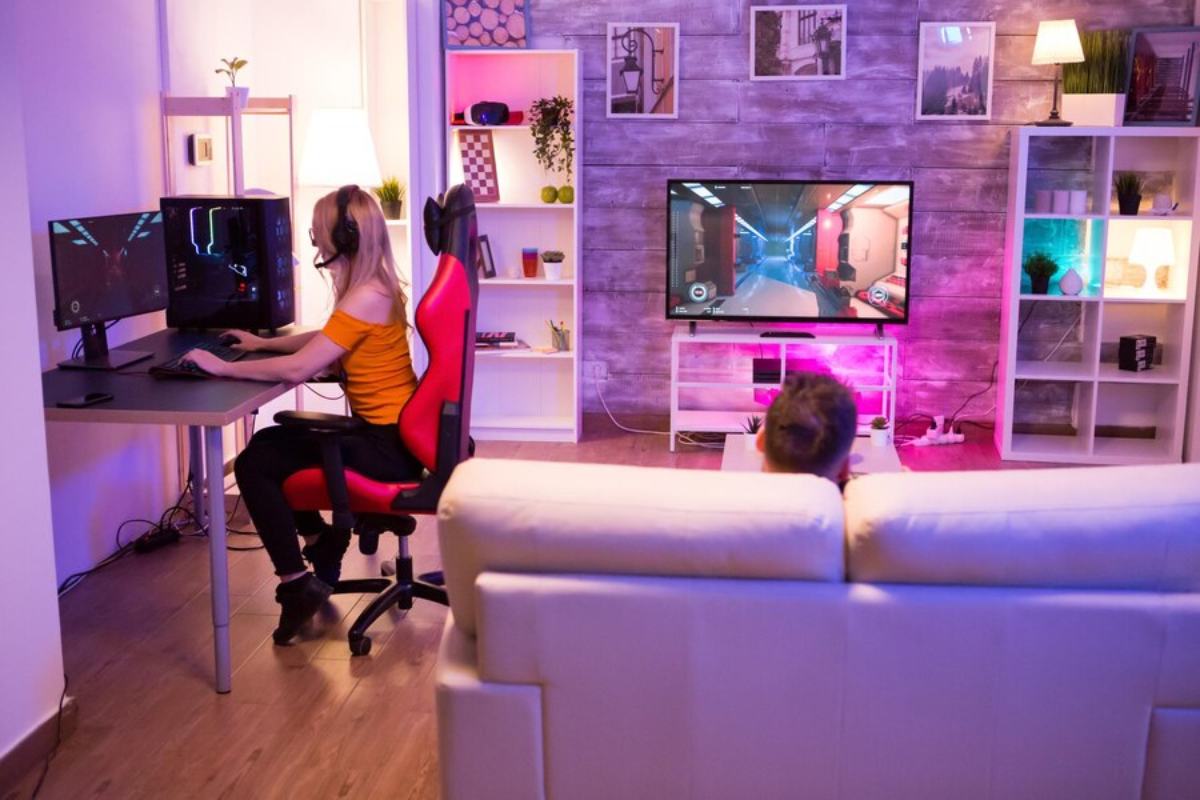Creating a gaming setup that offers a smooth and enjoyable experience doesn’t have to cost a fortune. With careful planning and smart decisions, you can build a setup that fits your gaming needs without overspending. Below is a step-by-step guide with tips, examples, and practical advice to help you make informed choices.
Step 1: Decide on Your Gaming Goals
Understanding your gaming preferences is the first step. Are you into competitive esports, casual single-player games, or virtual reality? Your goals will shape the setup you need.
Questions to Ask Yourself
- What types of games do I play most often?
- Do I need high-end graphics or basic visuals?
- How much space is available for my setup?
Example
If you mainly play online multiplayer games like Fortnite or Call of Duty, prioritize performance and internet connectivity. For single-player games, focus on visuals and immersion.
Step 2: Choose the Right Gaming Platform
You can game on a PC, console, or even a handheld device. Each platform has its pros and cons.
PC Gaming
- Advantages: Upgradable, better graphics, and wide game selection.
- Budget Tip: Build your PC instead of buying a prebuilt one.
Console Gaming
- Advantages: Affordable, upfront cost and exclusive games.
- Budget Tip: Consider older models like the PlayStation 4 or Xbox One, which still support many new games.
Handheld Gaming
- Advantages: Portability and affordability.
- Budget Tip: Devices like the Nintendo Switch Lite are cost-effective and versatile.
Comparison Table
| Platform | Cost Range | Key Advantage | Example |
|---|---|---|---|
| PC | $600 – $1500+ | Customization | Build a mid-tier PC |
| Console | $200 – $500 | Plug-and-play | Xbox Series S |
| Handheld | $150 – $300 | Portable gaming | Nintendo Switch Lite |
Step 3: Select the Core Components
Each component plays a crucial role in your setup’s performance. Here’s how to allocate your budget wisely.
Processor (CPU)
- Budget Option: AMD Ryzen 5 or Intel Core i5.
- Tip: Look for previous-generation models; they’re cheaper but still powerful.
Graphics Card (GPU)
- Budget Option: NVIDIA GTX 1660 or AMD RX 6500.
- Tip: Consider refurbished or used GPUs from trusted sellers.
RAM
- Budget Option: 16GB is optimal for most games.
- Tip: Start with 8GB and upgrade later if necessary.
Storage
- Budget Option: 500GB SSD for speed and 1TB HDD for extra storage.
- Tip: External drives can be a cost-effective addition.
Power Supply Unit (PSU)
- Budget Option: A reliable 500W PSU.
- Tip: Avoid cutting corners here to protect your components.
Motherboard
- Budget Option: Choose one that supports your CPU and has room for upgrades.
- Tip: Skip premium features like built-in Wi-Fi unless necessary.
Step 4: Find the Perfect Monitor
Your monitor should match your gaming needs without breaking the bank.
Factors to Consider
- Resolution: 1080p is affordable and sufficient for most games.
- Refresh Rate: 60Hz for casual gaming; 144Hz for competitive gaming.
- Size: A 24-inch monitor is a sweet spot for budget setups.
Budget Tip
Buy a refurbished monitor or look for deals during sales events.
Step 5: Get Essential Peripherals
These accessories enhance your gaming experience and are crucial for performance.
Keyboard and Mouse
- Budget Option: Combo packs like Logitech MK270.
- Tip: Mechanical keyboards are durable but can be pricey. Membrane keyboards work well on a budget.
Headset
- Budget Option: HyperX Cloud Stinger.
- Tip: Look for features like a noise-canceling microphone.
Controller
- Budget Option: Xbox controllers are compatible with PCs.
- Tip: Consider third-party brands for affordable alternatives.
Step 6: Optimize Your Gaming Space
A comfortable gaming environment improves focus and enjoyment.
Desk and Chair
- Budget Option: IKEA desks and office chairs.
- Tip: A second-hand ergonomic chair can save you money.
Lighting
- Budget Option: LED strip lights add ambiance for a low cost.
- Tip: Avoid expensive RGB lighting and opt for basic LED setups.
Cable Management
- Use zip ties and cable sleeves to keep your setup tidy.
Step 7: Ensure Reliable Internet Connectivity
Smooth online gaming requires a strong internet connection.
Router
- Budget Option: TP-Link Archer series.
- Tip: Place your router in a central location to avoid dead zones.
Wired vs. Wireless
- Ethernet provides more stability than Wi-Fi.
- Budget Tip: Use powerline adapters if running cables isn’t feasible.
Step 8: Add Personal Touches
Customizing your setup makes it uniquely yours.
Decor
- Posters of your favorite games.
- DIY shelving for collectibles.
Customization
- Use stickers or skins to personalize your equipment.
Expert Insights
Francisco González, a tech enthusiast, suggests prioritizing components that directly impact gameplay. “You can upgrade peripherals later, but a strong CPU and GPU are essential from the start,” he advises.
Final Checklist
Before wrapping up, ensure your setup includes:
- Core Components: CPU, GPU, RAM, storage.
- Monitor and Peripherals: Budget-friendly options.
- Comfort: Ergonomic chair and proper lighting.
With these steps, you can create an affordable gaming setup tailored to your preferences and budget. Start small, make smart choices, and upgrade as needed to enhance your gaming experience.




